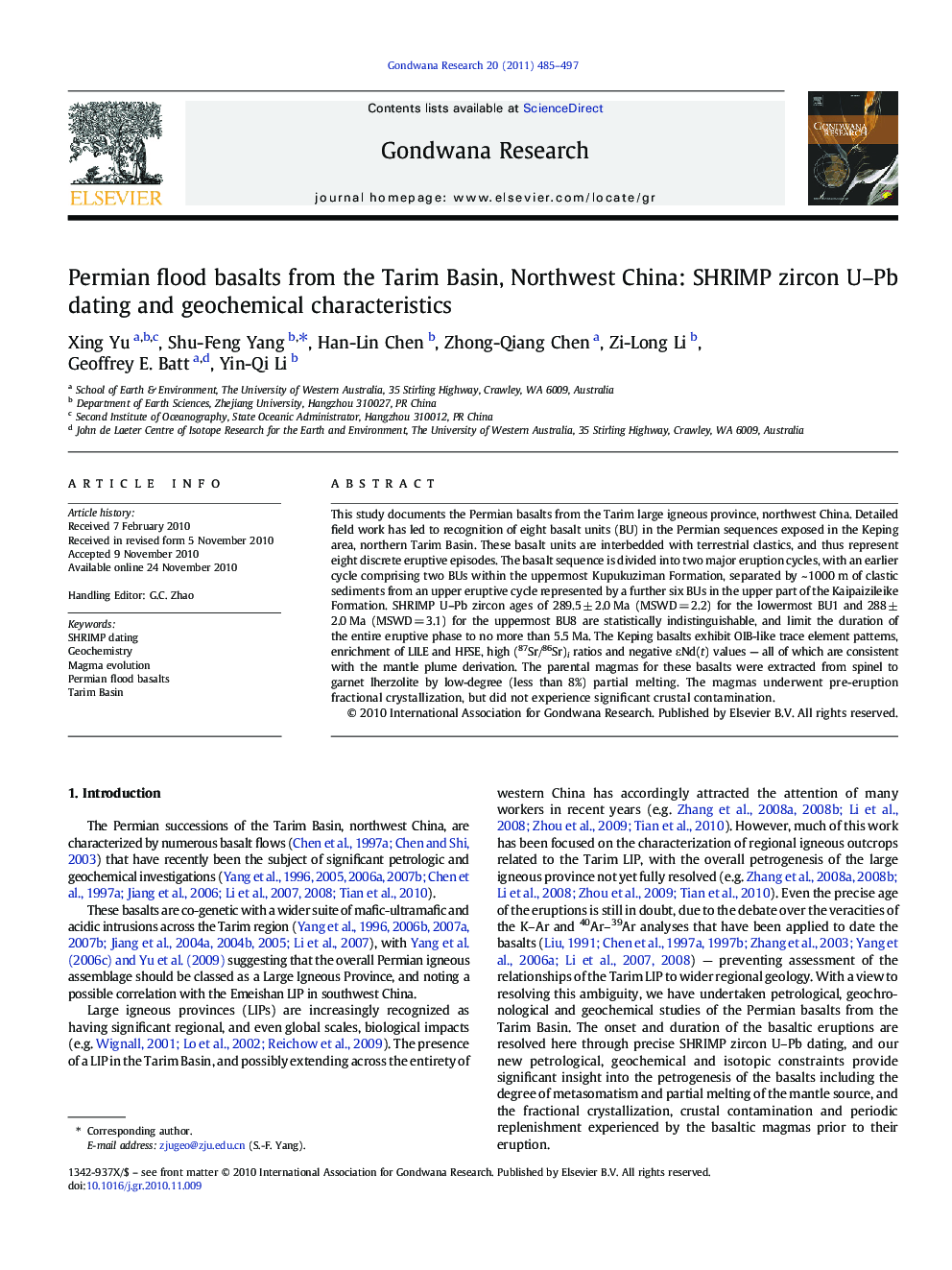| Article ID | Journal | Published Year | Pages | File Type |
|---|---|---|---|---|
| 4727708 | Gondwana Research | 2011 | 13 Pages |
This study documents the Permian basalts from the Tarim large igneous province, northwest China. Detailed field work has led to recognition of eight basalt units (BU) in the Permian sequences exposed in the Keping area, northern Tarim Basin. These basalt units are interbedded with terrestrial clastics, and thus represent eight discrete eruptive episodes. The basalt sequence is divided into two major eruption cycles, with an earlier cycle comprising two BUs within the uppermost Kupukuziman Formation, separated by ~ 1000 m of clastic sediments from an upper eruptive cycle represented by a further six BUs in the upper part of the Kaipaizileike Formation. SHRIMP U–Pb zircon ages of 289.5 ± 2.0 Ma (MSWD = 2.2) for the lowermost BU1 and 288 ± 2.0 Ma (MSWD = 3.1) for the uppermost BU8 are statistically indistinguishable, and limit the duration of the entire eruptive phase to no more than 5.5 Ma. The Keping basalts exhibit OIB-like trace element patterns, enrichment of LILE and HFSE, high (87Sr/86Sr)i ratios and negative εNd(t) values — all of which are consistent with the mantle plume derivation. The parental magmas for these basalts were extracted from spinel to garnet lherzolite by low-degree (less than 8%) partial melting. The magmas underwent pre-eruption fractional crystallization, but did not experience significant crustal contamination.
Graphical AbstractFigure optionsDownload full-size imageDownload as PowerPoint slideResearch Highlights►This paper for the first time has recognized eight basalt units (BU) in the Permian sequences which are recognized in the northern Tarim Basin, which are interpreted as having erupted within two major cycles and eight discrete eruptive episodes. ►SHRIMP U–Pb zircon dating demonstrates that the lowermost (BU1) and uppermost (BU8) basalt units formed at 289.5 ± 2.0 Ma and 288 ± 2.0 Ma, respectively, indicating that all units formed within a short period. ►The Keping basalts exhibit OIB-like trace element patterns, enrichment of LILE and HFSE, high [87Sr/86Sr]i ratios and negative εNd(t) values, all of which are consistent with mantle plume derivation.
